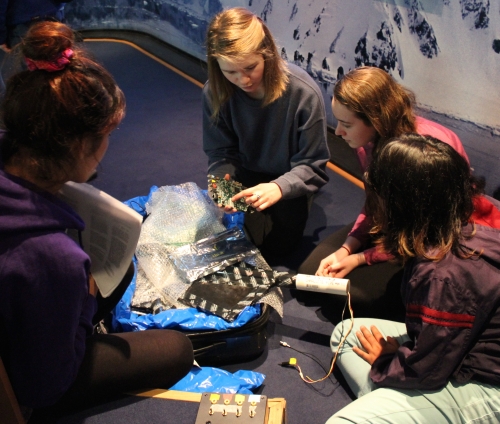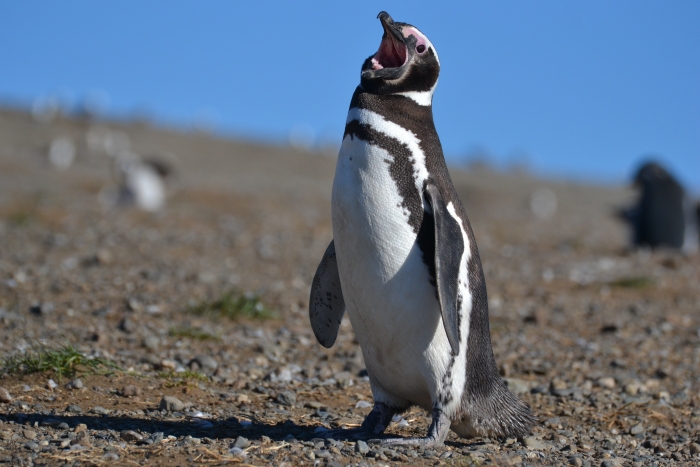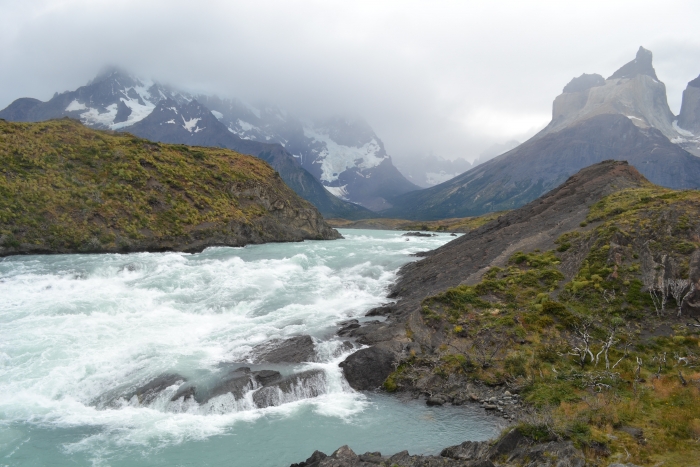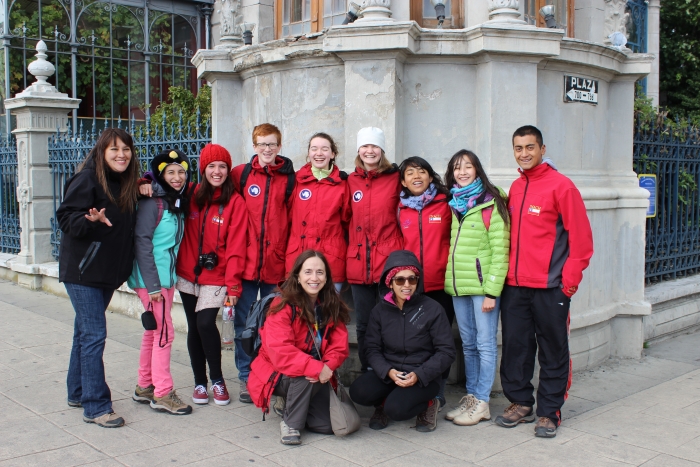By: Lynn Foshee Reed, Einstein Educator Fellow for NSF's Division of Polar Programs
The first Joint Antarctic School Expedition (JASE), a collaborative venture of the National Science Foundation's (NSF) Division of Polar Programs and the Chilean National Antarctic Institute (Instituto Antártico Chileno (INACH)), brought high school students and teachers to Punta Arenas, Chile, in February 2014. This pilot program aimed to provide participants with hands-on experience with Antarctic environments and ecosystems research. For ten years INACH has sponsored a program for secondary school students aimed at promoting awareness and appreciation of Antarctica in young Chileans. INACH holds a national competition in which small student groups perform experimental or bibliographic research. Winning teams are awarded an expedition to the Chilean research station on King George Island, Antarctica. In 2013, INACH invited the United States to participate in the Antarctic School Expedition.
NSF's Division of Polar Programs accepted the invitation to participate and, working jointly with the Arctic Research Consortium of the United States (ARCUS), selected student participants from a pool of competitive applicants. They also selected Juan Botella, a science teacher from Monona Grove High School in Wisconsin. Juan is a PolarTREC alumnus with Antarctic experience and speaks English and Spanish fluently. The three student participants—11th graders Anna Caldwell-Overdier and Luke Maillefe and 12th grader Claire Hacker—were from his school. Lynn Foshee Reed, Einstein Educator Fellow for the Division of Polar Programs, accompanied the U.S. group. Lynn has experience with international student science education projects through her work in 2012 and 2013 as co-lead in of the successful NSF funded Joint Science Education Project (JSEP) in Greenland and will return to JSEP in summer of 2014.

The U.S. team joined eleven students and five teachers from Chile on 16 February 2014 in Punta Arenas, a gateway city to Antarctica and location of INACH headquarters. The five winning Chilean teams gave presentations about their own research as well as about their schools and regions of Chile. The U.S. team gave a presentation on IceCube, the NSF funded neutrino observatory at Amundsen-Scott South Pole station, a natural choice with Anna's experience as a student intern with the project at the University of Wisconsin (UW) Madison. Working with Dr. James Madsen, an IceCube collaborator, the U.S. team decided to explain some of the ideas behind neutrino detection through a hands-on activity using cosmic rays as an analogy. Students from both countries practiced communicating in both English and Spanish.
Claire noted, "One of the most memorable experiences from my time in Punta Arenas is the afternoon we spent at the INACH microbiology laboratory. After a short tour we divided into groups to learn about different ways to detect specific proteins called cryoproteins, which are responsible for keeping some Antarctic plants from freezing. Because I knew very little about this subject, and because I was learning about the new procedures in Spanish, my experience in the lab was both exciting and challenging. Our work involved concepts that I would have had many questions about in English; so grasping them in Spanish was a struggle. Fortunately, Reynalda, a student in our group from Santiago and passionate about science, was willing to explain anything to me in either language. Between Reynalda and others, I managed to get most of my questions answered and learned quite a bit about the lab processes we were using to detect the proteins. I hope some of the knowledge I gained finds its way into my future career."
After the initial seminars and presentations in Punta Arena, the plans for this JASE program were to move to King George Island where students would stay at the INACH Escudero station, have opportunity to work with Antarctic scientists in the field, and learn about subjects ranging from glaciology to ecology. Unfortunately, due to an outbreak of gastrointestinal illness affecting about 30% of the group the Antarctic expedition was not completed as planned. INACH made the difficult decision to cancel the trip to avoid the potential of carrying the "bug" to the Antarctic stations. Although disappointed, all the teachers and students understood and supported the decision.
Juan Botella wrote: "We were all looking forward to doing research in Antarctica. I wanted to learn more about the research techniques that Dr. Mauricio Rondanelli from Universidad de Concepción uses for identifying pollen that arrives from South America to King George Island. This study might become even more important as climate change modifies the environmental conditions of the islands to the point that new plant species are able to establish there. Other plans were to collect the vascular plants that grow in King George Island and later isolate and identify the proteins that protect them from the cold—a laboratory experience that would have been led by Dr. Jorge Gallardo Cerda, from INACH. Nevertheless, I came out of this experience inspired to help my students engage in fairly complex scientific projects after seeing how Chilean teachers with fewer resources are able to guide their students. I was very impressed by the complexity of the Chilean student projects and their willingness to share their work."
The Chilean students will go to Escudero station later in the year, perhaps at the winter holidays, but it is not clear if the U.S. team will be able to return. Therefore, INACH helped arrange alternate natural science experiences for the U.S. group including a trip to Torres del Paine National Park.
In Luke's words, "At the centerpiece of the park are three massive granite towers jutting up from the ground at impossible angles. It was amazing to learn how millions of years ago sedimentary layers of the earth accumulated and solidified and after years and years of glacial erosion only the resilient granite peaks remained. Another day we took a two-hour boat ride to Isla Magdalena. The island is home to some 3,000 pairs of Magellanic penguins. To see penguins burrowing, swimming, and waddling in their natural habitat was amazing."


After leaving Punta Arenas the U.S. team traveled to Santiago, Chile , which Anna described: "We visited an eighth-grade science class at Nido de Aguilas International School in Santiago as well as the U.S. embassy. Our group presentation was well received by both audiences; the embassy staff held an additional dialogue with us and shared information about their specific roles in the embassy and how science relates to what they do. We described our experiences working with researchers at UW-Madison with the IceCube Neutrino Observatory and with the Chilean science fair winners in Punta Arenas."

The JASE team kept an online journal (in both English and Spanish) where they related their experiences and shared photographs. The journals and the webinar that the team held on 25 February are available on the PolarTREC website.
For more information about the 2014 JASE program, see the NSF press release or contact Lynn Foshee Reed (lreed [at] nsf.gov).
